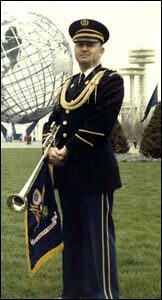Our History
The U.S. Army Band “Pershing’s Own” was formed on January 25, 1922 by order of General John J. Pershing: “You will organize and equip The Army Band.” General Pershing believed that bands played a vital role in troop morale and efficiency and was convinced that America needed a premier band to surpass those of Europe.
Celebrating a Century of Service to our Nation
This 300+ page book takes a detailed look into the first 100 years of The U.S. Army Band “Pershing’s Own” and our service to the nation.
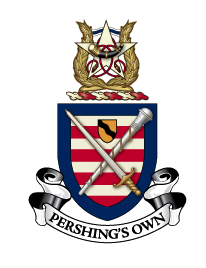
The creation of the Coat of Arms for the Army Band was authorized in late 1964 and was created at the Army’s Institute of Heraldry.
The band’s distinctive insignia, or coat of arms, consists of three parts:
The Shield
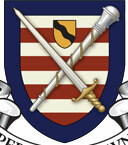
- It contains eight red and white stripes that allude to an octave in music.
- The blue border represents that the band is the chief musical organization of the entire Army.
- The sword and the baton indicate the band’s mission of supplying military music.
- The small gold and black shield symbolizes the band’s Rhineland Campaign Honor received during World War II.
The Crest
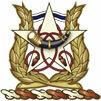
- It contains a laurel wreath, a symbol of honor and prominence, formed in the shape of a lyre to symbolize music.
- The large white (silver) star symbolizes that the band is the “Band of the Chief of Staff” and also represents General Pershing’s founding role.
- The bugle horn, one of the earliest instruments used for martial music, is used to denote a military marching band.
The Motto

- The motto is the scroll containing the band’s official designation, “Pershing’s Own,” which signifies the band’s founder, General John J. Pershing.
The distinctive uniform worn by The U.S. Army Band “Pershing’s Own” was created and adopted in the late 1960s, and was debuted at the Inauguration of President Richard Nixon on January 20, 1969. It was designed for the band by the Army’s Institute of Heraldry at Fort Belvoir, Virginia. This distinctive uniform is only authorized for wear by The United States Army Band “Pershing’s Own.”
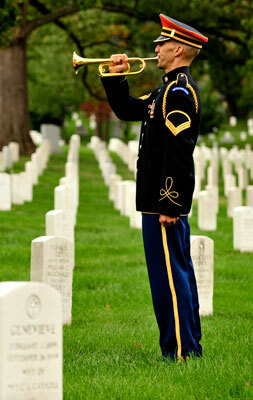

The uniform is patterned after traditional 19th century military uniforms, featuring Civil War style inverted rank and frock coat. The eight buttons down the front of the blouse allude to the eight notes of the musical scale, and each button is stamped with the Great Seal of The United States. The high collar, known as a standing military collar, is directly linked to the uniforms that General Pershing wore.
The collar insignia features the crest from the unit’s Coat of Arms. The use of miniature medals was started by order of Chief of Staff General Harold K. Johnson. The use of a gold braid is for decorative purposes, and the red color in the hat represents the red coats frequently worn by musicians up to the time of the Civil War.
History of The U.S. Army Band Uniforms
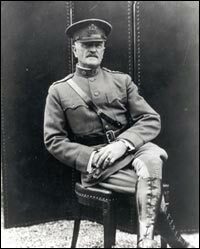
Until World War II, The U.S. Army Band wore several variations of the “Pershing’s Gray” uniform. During World War II, slate blue uniforms were worn. After World War II, the band wore a variety of olive-drab uniforms, including “Ike” jackets.
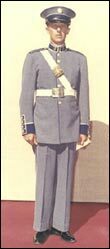
In 1949, the standard Army dress blue uniform with cap insignia and yellow aiguillette was adopted.
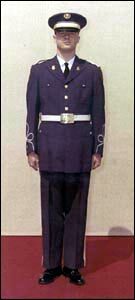
During the early 1950s, the band briefly wore a yellow uniform, known as “The Lion Tamer.”
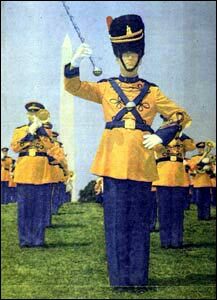
In 1957, the more elaborate Army dress blues were adopted (worn at Kennedy funeral).
